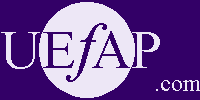Academic writing
Rhetorical functions in academic writing: Writing descriptions
Describing is showing your knowledge and understanding.
Knowledge:
Shows your knowledge of previously learned material by recalling facts, terms, basic concepts and answers. It shows you have
knowledge of specific facts & terminology; knowledge of ways and means – conventions, trends and sequences, classifications and categories, criteria, methodology; knowledge of universals and abstractions – principles & generalisations, theories and structure.
Description considers answers to questions such as: What is …? How is …? Where is …? When did _______ happen?
Common instruction verbs associated with description are: define, list, name, recall, record, relate, repeat, state, underline.
Comprehension:
Demonstrates your understanding of facts and ideas by organising, comparing, translating, interpreting, giving descriptions and stating main ideas. It involves stating a problem in own words. It shows you knows what is being communicated and can make use of materials or ideas without necessarily relating it to other materials or seeing further implications. It includes: translation of verbal material into symbolic statements; interpretation of data; extrapolation – trends and tendencies.
Comprehension considers answers to question such as: How would you classify the type of …? What was the text about? Can you summarise the author’s point of view? Typical instruction verbs associated with comprehension are: classify, describe, distinguish, explain, express, identify, illustrate, locate, recognise, report, restate, review, tell, translate.
Examples
Read the following descriptions:
|
An octopus appears to be just a huge head with eight long, fearful arms. Its head is soft and rubberlike. Its eyes stick out on stalks so that it can see in all directions. Its mouth is on the underside of its body and has powerful jaws shaped like a beak. The long arms, or tentacles, have double rows of suckers. These can fasten onto objects with such suction that they cannot be pulled off. |
|
The liver is the largest organ in the body. It weighs a little more than three pounds in an adult. It is wedge-shaped and is situated under the diaphragm, mostly on the left side of the body, where it is protected by the lower ribs. Somewhat like an intricate chemical factory, the liver takes the particles of glucose (which come from digested starches and sugars) and changes them into another kind of carbohydrate called glycogen , which it then stores. When the body needs sugar, the liver turns the glycogen into glucose again and sends it to the body tissues through the bloodstream. |
|
The Leclanché cell consists of a leakproof jacket containing a porous pot in which there is a paste of manganese dioxide and carbon granules surrounding a carbon rod. The top can be sealed with pitch. A zinc rod stands in a solution of ammonium chloride, and is connected to the carbon rod via a circuit and a light bulb. The zinc dissolves in the solution, setting up an electromotive force. The ammonium ions migrate to the carbon anode and form ammonia (which dissolves in the water), and hydrogen ions. Torch dry batteries and use wet paste cells of the Leclanché type. |
|
A 12-volt car battery has six two-volt cells connected in series. The cells have anodes of brown lead oxide and cathodes of porous grey lead immersed in sulphuric acid. An electric current flows if the electrodes are connected through a conductor. When the battery supplies current the sulphuric acid converts the anode to lead sulphate, thus reducing the strength of the acid. This process is reversed during recharging. Each cell of the battery is made of several anodes and cathodes separated by porous insulators. The cells are housed in a hard rubber case and the various cells are interconnected with lead bars. |
Language
Position, weight, structure, colour, composition, size, shape, function
Position
|
A is |
adjacent to |
B |
|
between |
B and C. |
Structure
|
X |
is |
nailed |
to |
Y |
by |
Z |
|
consists |
of |
Y and Z |
||||
|
contains |
||||||
|
is |
held in place |
by |
Y |
|||
|
joined |
to |
|||||
|
mounted |
on |
|||||
Colour
|
X |
is |
dark |
green. |
Composition
|
X |
is |
made of |
metal. |
Size and weight
|
X |
is |
6 cm |
long |
|
X |
is |
6 cm |
in |
length |
|
6 Kg |
weight |
|
The |
length |
of |
X |
is |
6 cm |
|
weight |
6 Kg. |
|
X |
has |
a |
length |
of |
6 cm. |
|
weight |
6 Kg. |
|
X |
weighs |
10 Kg |
Shape
|
X |
is |
square |
in shape |
|
X |
is |
is shaped like a |
square |
|
X |
is |
cubical |
in shape |
|
X |
is |
bulbous |
in shape. |
|
diamond-shaped |
. |
Function
|
The |
function |
of the |
thermometer |
is to |
measure the temperature. |
|
The |
thermometer |
is used for |
measuring the temperature. |
Properties
|
X is |
light |
Exercises
See also: Writing Functions 7: Classifying

